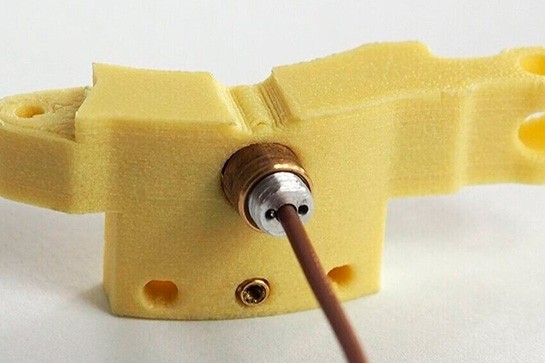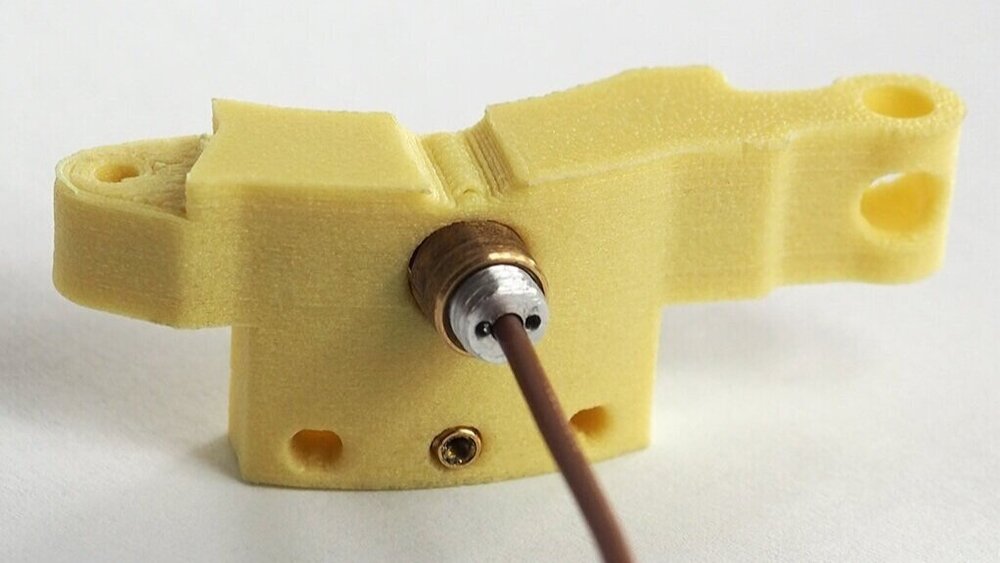
Traditionally, additive manufacturing has been used in areas such as automotive, education or architecture, among others. However, this project was developed within the framework of geology.
Tomas Feřtek, a research engineer at the Institute of Geology, has used 3D printing to produce mechanical sensor mounts, sensor bodies, and motors for high-pressure chambers.
The need to test new sensors, optimize and modify designs, led to additive manufacturing. 3D printing speeds up manufacturing, which is done independently (without relying on an outside company) and reduces production costs compared to parts manufactured with a CNC milling machine.
One of the parts they needed to manufacture had to serve as a pressure sensor. For this application it was important to use an abrasion and chemical resistant material.

When reviewing the characteristics of the different technical filaments that can be found in the market, they found one that met all the requirements for the manufacture of the piece in question, so it was chosen for this application: the Nylon AF80 Aramid filament manufactured by Fillamentum.
Nylon AF80 Aramid filament is a material created for 3D FDM printing made of aramid fibers and a mixture of polyamides. AF80 nylon is a self-lubricating material with tribological properties: Parts made from this material are especially slippery, while aramid is a robust synthetic fiber resistant to impact, abrasion, organic solvents and heat.
The reinforcement of the aramid fibers together with the properties of the AF80 nylon give the Nylon AF80 Aramid filament the following properties:
- Tribological properties
- Great tensile strength
- High heat resistance
- Impact resistance
These properties were very useful in the project of the Institute of Geology of the Czech Academy of Sciences, which has been one of the first institutions to test this filament.
When printing with the Nylon AF80 Aramid filament, Tomas Feřtek has used the same printing configuration that he uses for printing on ABS, modifying only the temperature of the hot bed (amounting to 140º C). Tomas Feřtek has stated that printing with the Nylon AF80 Aramide filament met all his expectations and those of the Institute of Geology.

Among other features, they have highlighted the good adhesion between layers or the matte finish of the piece, very attractive on an aesthetic level. As printing tips, they have recommended printing this material on a professional 3D printer, preferably with a heated camera; as well as the use of a suitable adhesive for polyamide such as Magigoo PA. The cooling of the piece must be slow to avoid the appearance of problems such as warping.
The use of additive manufacturing as a manufacturing technique or for prototyping is a great advance for small and medium-sized companies and institutions, achieving:
- Independence
- Immediacy
- Cost reduction
Thanks to 3D printing, these companies do not need to outsource production or prototyping services. Thus, they can carry out tests, improvements and modifications on the designs until they reach the final piece. By not having to depend on other companies, manufacturing times are reduced, and consequently the costs associated with the manufacturing or prototyping process are minimized.












